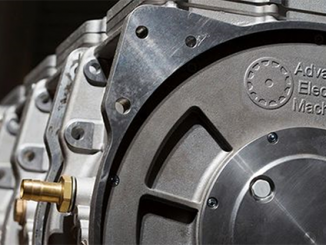On 9th April 2014, Swiss scientist André Boschberg and his Solar Impulse team presented their new aircraft, in which they plan to fly around the world in five stages in 2015 using nothing more than solar power. Solar Impulse 2, or SI2, is the successor to the first Solar Impulse craft, HB-SIA, which notched up major milestones including solar-powered night flight and crossing the North American continent. Both aircraft are constructed using materials manufactured by VAC, with specific properties that enhance the performance of the high-efficiency electrical motors. VAC congratulates the team on the new SI2 and is excited to see how the new Solar Impulse aircraft masters this new challenge.
Construction of the successor to the HB-SIA began in 2011. Various upgrades to the original were necessary to enable the new aircraft to cross the oceans; a more spacious pressurized cabin for higher altitudes was built to boost the payload, while cabling and avionics were waterproofed to allow the craft to fly through rain. Redundant systems were incorporated to increase reliability. Oxygen supply and other pilot assistance systems now enable flight altitudes of 12,000 m to be achieved. With a wingspan of 80 meters, SI2 is just slightly wider than its counterpart, the A380 – yet thanks to its lightweight construction, it is no heavier than a normal car.
VAC’s ULTRAVAC 44 V6 alloy was used in the stator and rotor of the aircraft’s motors. In addition, magnet systems bonded together from small blocks of VACODYMwere used. By assembling magnet systems from small individual magnets, eddy current losses in the rotor can be reduced and motor efficiency can be increased to 98 percent.
NiFe materials have long been used as alternatives to electrical steel, providing the benefit of extremely low hysteresis losses. The new ULTRAVAC 44 V6 alloy also offers a significantly higher electrical resistivity of 0.8 µWm – almost double that of electrical steel. The new material minimizes eddy current losses and is thus particularly useful in response to the trend towards increasingly high-speed motors.
In general, significantly reduced iron losses result in outstandingly efficient electric motors – and Solar Impulse 2 delivers impressive proof.



